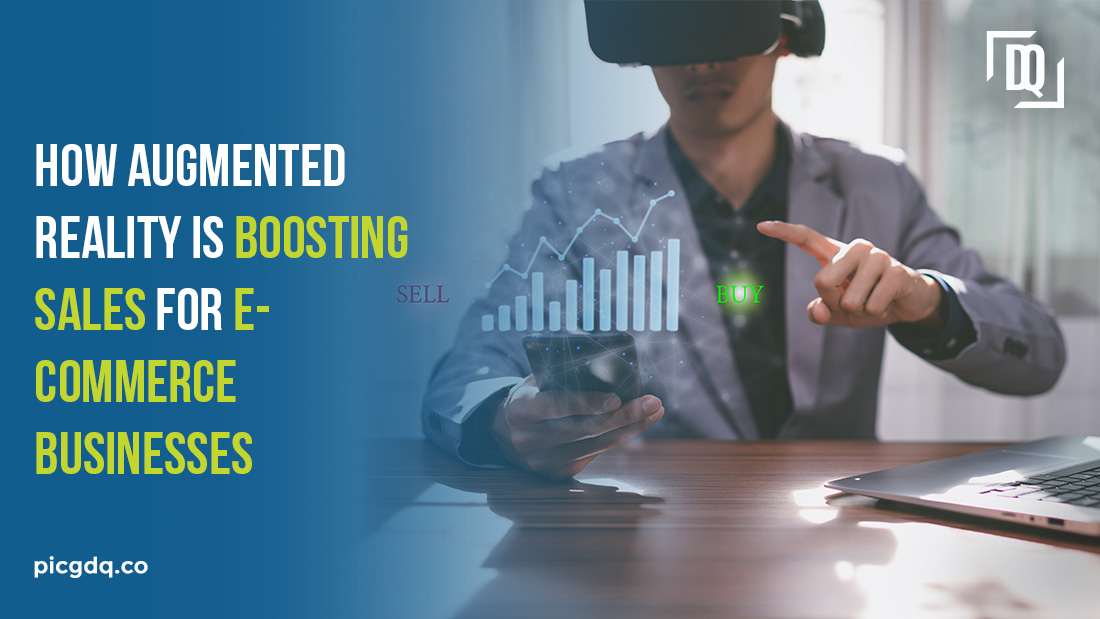Published on 15 Apr, 2024

Imagine walking into a furniture store, picking a couch, and virtually placing it in your living room to see how it looks before you buy it. Sounds futuristic, right? Well, thanks to Augmented Reality (AR), this is exactly what online shoppers can do now!
AR is revolutionizing the way people shop online, and e-commerce businesses are taking notice. But what exactly is AR, and how is it boosting sales?
AR overlays digital elements onto the real world through your smartphone or tablet. Think of it like Pokemon Go, where you could see virtual creatures in your park. In e-commerce, AR lets customers see products placed virtually in their own space.
For instance, an online furniture store can offer an AR app that allows you to see a virtual sofa in your living room, or a clothing store can let you virtually try on clothes before purchasing. This bridges the gap between online shopping and the physical experience, giving customers a much better understanding of the product.
Reduced Returns: One of the biggest challenges of online shopping is visualizing how a product will look or fit. AR solves this by letting customers see the product in their own environment. This reduces the chances of them buying something that doesn't fit their space or style, leading to fewer returns and happier customers.
Increased Confidence: Many people hesitate to buy online because they're unsure about the product. AR builds trust by giving them a more realistic view of the product. Imagine virtually trying on a pair of sunglasses and knowing exactly how they'll look on your face. This increased confidence translates to more sales.
Engaged Customers: AR is a fun and interactive way to shop. Imagine virtually placing different colored couches in your living room to see which one looks best. This interactive experience keeps customers engaged and excited about your products, leading to them spending more time browsing and potentially buying more.
Personalized Shopping: AR can personalize the shopping experience. For example, a shoe store could allow you to virtually try on different shoe sizes and colors. This level of personalization makes customers feel like you understand their needs, leading to increased brand loyalty.
Standing Out From The Crowd: In today's competitive e-commerce market, it's crucial to stand out. AR is a cutting-edge technology that can set your store apart from the competition. Customers will be impressed by your innovative approach and more likely to choose you over stores that don't offer AR features.
IKEA Place lets you virtually place furniture in your home to see how it looks and fits.
Sephora Virtual Artist allows you to virtually try on makeup before buying.
L'Oreal Style My Hair lets you see how different hair colors would look on you.
Converse Customizer allows you to design your own custom Converse sneakers virtually.
More Sophisticated AR experiences: Expect even more realistic and interactive AR experiences that will blur the lines between the physical and digital worlds.
Wider adoption: As AR technology becomes more affordable and accessible, we'll see more e-commerce businesses jumping on board.
Omnichannel experiences: AR will be integrated with other channels like social media, creating a seamless shopping experience across all platforms.
Identify products that benefit from AR: Focus on products where visualization is important, such as furniture, clothing, or home decor.
Choose the right AR development partner: There are companies that specialize in developing AR experiences for e-commerce.
Start small and iterate: You don't need to create a full-blown AR experience right away. Start with a simple feature and see how customers respond.
AR is no longer just science fiction. It's a powerful tool that can transform the way people shop online. By embracing AR, e-commerce businesses can increase sales, build trust with customers, and stay ahead of the competition. So, are you ready to take your e-commerce business to the next level with AR?